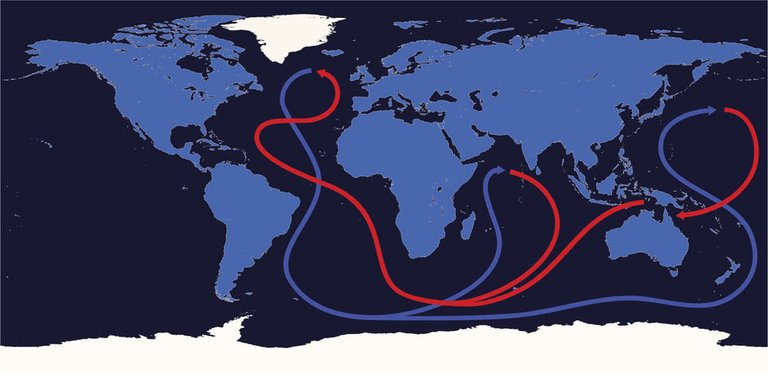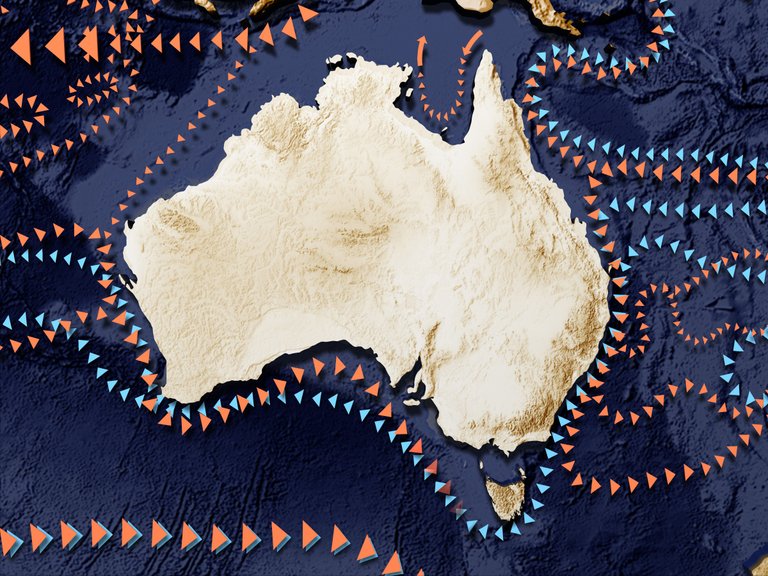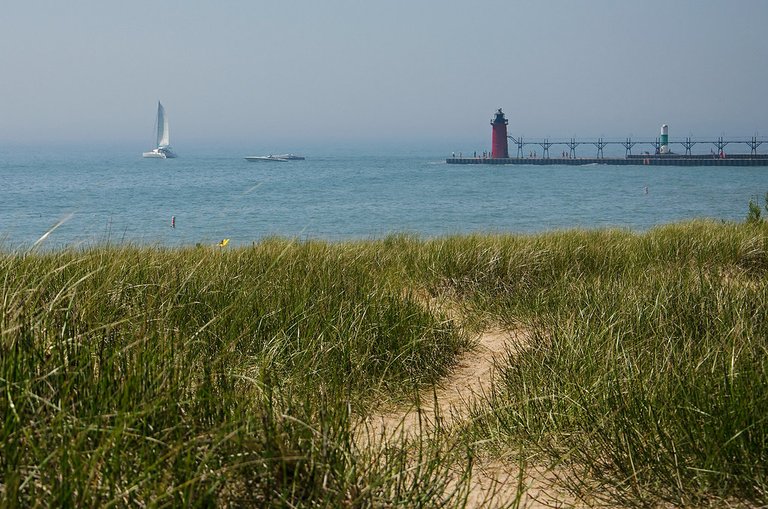Just like you can say that there is a circulatory system in your body where liquid (blood) flow through, so can the earth say that it is surrounded by oceans which is connected by a vast conveyor of moving water. This oceans which we can refer to as the circulatory system of the earth can transport heat, nutrient and animals among other things from one part of the earth to the other and the network of oceans connected together and moving around, keeps the earth healthy.
The ocean plays a very big role in our weather and climate, it is very important in creating and shaping an entire ecosystem for water organisms and with humans, we cannot underestimate the importance of ocean to humans from food provision to influencing our civilization. The oceans movement is possible thanks to Salt, Sunlight, and wind.
While earth enjoys the bliss of the ocean surrounding it, it might not be too long before these oceans begin to break as a result of climate change. I went to the village this holiday and I was told that a river that was always full and needed a boat to paddle through dried up as a result of heat and only comes as a little stream during the raining season. The mentioned that they have gone to check that it wasn't blocked by anything and they came to a conclusion that it was temperature change that caused it.
We call our only home at least for now (until Elon takes us to Mars) the blue planet because it is covered with water having 2/3 of it composed of water. In ocean on earth is 100 times heavier than the atmosphere on earth but then ocean current moves the ocean around and they are all tied together via the ocean conveyor. The current that carry water vary in different areas with some reaching up to 10 Sverdrop.
I knew you were going to ask what Sverdrop is and I was going to tell you. Sverdrop is the unit that scientists used to describe the quantity of water going around the ocean where 1 sverdrop is 1 million cubic meters passing per second (1 million m3/second). The current of all the rivers on earth combined is measured at 1 sverdrop so when some part of the oceans have 10 sverdrop, it can be a lot.
How ocean current work differ depending on how it is being viewed. On the surface, it is being controlled by wind majorly forming a current that is affected by wind, tides, the shape of the land, and the earth's rotation but these aren't what causes the ocean water to move, rather about 9/10 of ocean waters are controlled by density. Quick elementary class, we all know that hot water is less dense than cold water since its molecules are not tightly connected like that that of cold water.
So if we were to measure hot and cold water of the same volume, we will see that the hot water weighs a little less to the cold water. Also, when they are mixed, cold water sinks below hot water. Density plays a vital role in the driving force of earth's deep ocean circulation where cold waters sink while warm waters are at the surface.
Density by temperature isn't the only force when it comes to the ocean. If you taste ocean water, you will see that it is salty and salt in water fills the unused space between water molecules and this increases the mass of water mixed with salt compared to fresh water making salt water denser than fresh water making salt water sink below fresh water.
The ocean conveyor uses temperature and salinity as a crucial factor for its circulation and it is referred to as Thermohaline Circulation ("thermo" meaning temperature, and "Haline" meaning saltness). The sun evaporation does its work in making the water around he earth move since when its evaporates the water, it makes its saltier and water in the poles are colder which means they are below while warmer ones are on the surface. The cold water moves until it rise to the surface as a result of being hot and it moves northwards where it releases the heat to the atmosphere to warm the earth and it travels to get cold again and the circulation continues.
Back to climate change and its effect on us. I know you are probably tired of hearing climate change without seeing any personal experience. Well, you are experiencing a lot of personal experience from climate change but you are not aware of them and one of them is temperature change. That said, the more we heat our planet, the more ices are melted you might ask what the problem is since ice melting into the ocean is just water, well the problem is that melted ice is fresh water and not salt water.
So when we add more fresh water from ice, it would decrease the density of the water which would slow the sinking of water that actually pumps the global ocean conveyor and this means that if this continues for more and increases longer, so many areas in the world including Africa would experience drought, fishery would be disrupted. If the current stops, then there might be a problem especially to restarting it as it would start by itself. We should not forget to mention that this is a low probability, high impact event, so it might not happen anytime soon but if it does, it can be very catastrophic.
Reference
https://www.arcgis.com/apps/MapJournal/index.html
https://oceanservice.noaa.gov/facts/conveyor.html
https://education.nationalgeographic.org/resource/ocean-conveyor-belt/
https://tos.org/oceanography/assets/docs/4-2_broecker.pdf
https://www.ucl.ac.uk/news/2021/feb/earths-gulf-stream-system
https://www.ncei.noaa.gov/products/etopo-global-relief-model
https://www.pik-potsdam.de/~stefan/Publications/Book_chapters/essay.pdf
https://www.carbonbrief.org/atlantic-conveyor-belt-has-slowed
https://oceanservice.noaa.gov/education/tutorial_currents/05conveyor3.html
https://manoa.hawaii.edu/exploringourfluidearth/physical
https://www.geomon.co.uk/climate-change-impacts-thermohaline-circulation/
https://e360.yale.edu/features/climate-change-ocean-circulation-collapse-antarctica
https://oceanservice.noaa.gov/facts/conveyor.html
https://education.nationalgeographic.org/resource/ocean-conveyor-belt/
https://tos.org/oceanography/assets/docs/4-2_broecker.pdf
https://www.ucl.ac.uk/news/2021/feb/earths-gulf-stream-system
https://www.ncei.noaa.gov/products/etopo-global-relief-model
https://www.pik-potsdam.de/~stefan/Publications/Book_chapters/essay.pdf
https://www.carbonbrief.org/atlantic-conveyor-belt-has-slowed
https://oceanservice.noaa.gov/education/tutorial_currents/05conveyor3.html
https://manoa.hawaii.edu/exploringourfluidearth/physical
https://www.geomon.co.uk/climate-change-impacts-thermohaline-circulation/
https://e360.yale.edu/features/climate-change-ocean-circulation-collapse-antarctica




